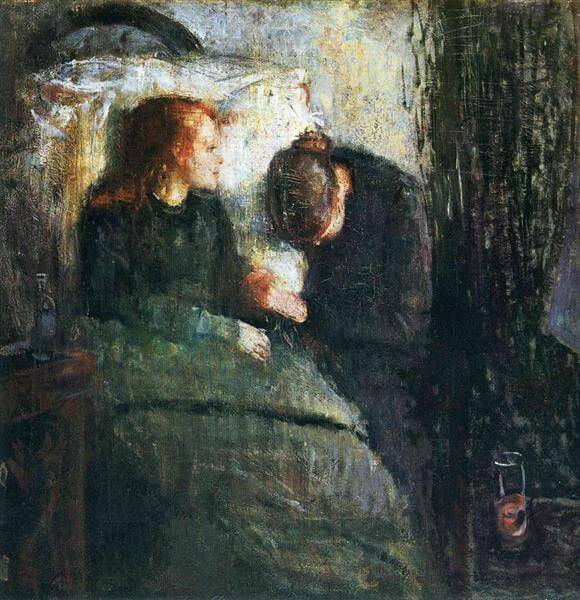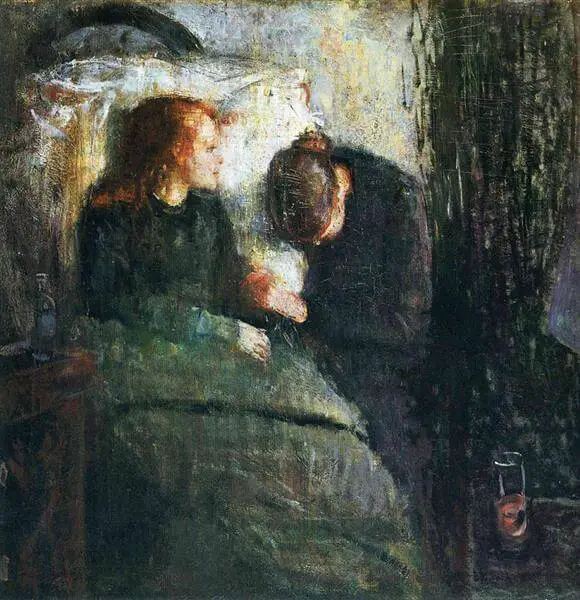Title of Artwork: “The Sick Child”

Artwork by Edvard Munch
Year Created 1885-1886
Summary of The Sick Child
The Norwegian artist Edvard Munch created a series of six paintings, as well as lithographs, drypoints, and etchings between 1885 and 1926 under the collective name The Sick Child (Norwegian: Det syke barn). All documents capture the last second before his older sister Johanne Sophie (1862–1877) passed away at age 14 from tuberculosis. Over the course of more than 40 years, Munch repeatedly revisited this extremely traumatic event in his artwork, resulting in six finished oil paintings and numerous studies in various media. The studies frequently feature Sophie in a cropped headshot on her deathbed, often with a dark-haired woman who is presumed to be her aunt Karen. Sophie is depicted in all of the paintings as sitting in a chair, obviously in pain, resting her head on a sizable white pillow, and gazing menacingly at a curtain that is probably meant to represent death. She is depicted with a haunted look on her face, holding hands with an older woman who appears to want to comfort the younger girl but whose head is bowed as if she cannot bear to look her in the eye.
All About The Sick Child by Edvard Munch
Munch frequently revisited his paintings throughout his career and produced multiple variations of them. Munch, who himself nearly died of tuberculosis as a child, used The Sick Child as a way to express his feelings of despair and guilt over being the one to survive as well as his grief over his deceased sister. He developed an obsession with the image, producing numerous variations in a wide range of formats over the ensuing decades. The six painted pieces were created over the course of more than 40 years using various models.
According to one review, the series is “a vivid study of the ravages of a degenerative disease.” All of the paintings and a large number of the supporting pieces are regarded as important to Munch’s body of work. A black, yellow, and red lithograph from 1896 that sold for $250,000 in 2001 at Sotheby’s.
Each painting depicts Sophie lying on her deathbed in profile, obviously having breathing problems, a sign of advanced, severe tuberculosis. A large, thick white pillow that partially conceals a large circular mirror that is mounted to the wall behind her supports her from the waist up. She’s wrapped in a thick, dark blanket. She is depicted as frail, with sickly pallor, vacant eyes, and red hair. She is gazing at a full-length curtain that is dark and ominous and that many art historians interpret as a representation of death.
An older, dark-haired woman holding the child’s hand by her bedside wears a black dress. The joining of their hands, which are placed exactly in the middle of each work, forges the connection between the two. Art historians believe that because of the pathos and intensity with which they are frequently depicted holding hands, the two figures not only shared a close emotional connection but were also almost certainly blood relatives. The lady is probably Sophie’s aunt Karen. According to some critics, the older woman is more distressed than the child; Patricia Donahue wrote, “It almost seems as though the child, knowing that there is nothing more that can be done, is comforting a person who has reached the end of her endurance.”























